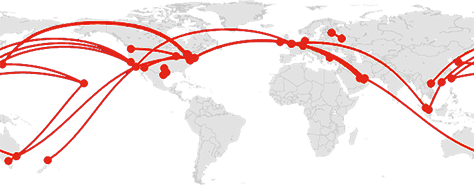
There’s one facet of airline branding that’s subtle, yet intensely symbolic. And best of all, it doesn’t cost a thing. It’s the flight number.
In the age of rail, railroads often reserved lower numbers for their most prestigious trains. By the jet age, Pan Am used “flight 1″ for its fabled round-the-world service (flight 2 flew the same route, but in the opposite direction.) The flight an airline designates as “flight 1″ has powerful meaning. It may reflect the airline’s history (as in the cases of Southwest, JetBlue, and American.) Or it might reflect present priorities (as for Air Canada.) Sometimes flight 1 can give you a deep insight into an airline’s soul. And sometimes not.
Read more
June 9th, 2013 \ Posted in History \ No Comments »
 An investor group announced in March that it has acquired the trademarks for Eastern Airlines and plans to launch a new carrier with that name.
An investor group announced in March that it has acquired the trademarks for Eastern Airlines and plans to launch a new carrier with that name.
But before they do, they may want to consider what happened to Pan Am. Because after 64 years, the storied Pan Am brand ended up not in the skies but on the rails.
The brand was sold off after the original Pan Am’s bankruptcy in 1991. In 1996, the blue Pan Am globe was flying once again on a single A300 christened the Clipper Fair Wind. But the second Pan Am didn’t last long; after a star-crossed merger with Carnival Air Lines, another Pan Am followed the first into bankruptcy. Read more
August 1st, 2010 \ Posted in History, News \ No Comments »
 There’s an old joke that a town too small to support one lawyer is still big enough to support two. Canada is a small country that, historically at least, has been able to support two airlines: Air Canada on one side, and a variety of challengers over the years on the other.
There’s an old joke that a town too small to support one lawyer is still big enough to support two. Canada is a small country that, historically at least, has been able to support two airlines: Air Canada on one side, and a variety of challengers over the years on the other.
The difference between this brand duopoly and, say, Coke and Pepsi, is that in Canada there has always been a subtle political dimension to airline branding.
Air Canada, the erstwhile Crown corporation, is the flying symbol of the central Canadian establishment. Its branding is sedate; its flashiest advertising so far featured a song by Celine Dion, an approved Canadian choice. Its headquarters are in Montreal. If Canada’s natural governing party had a natural governing airline, Air Canada would be it. Its symbol is a maple leaf; it is, after all, the flag carrier. Read more
July 11th, 2010 \ Posted in Canada, History \ No Comments »


 An investor group
An investor group 